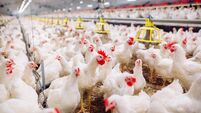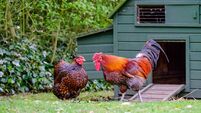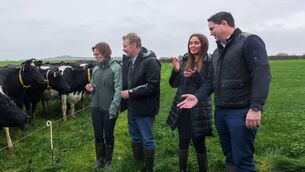Short rotation system for grazing very risky
According to some reports, this system can give satisfactory results, but perhaps not necessarily better than the more tried and tested system of grazing to about two inches (4cm to 5cm) with an 18 to 21 day rotation.
In my view, the short rotation system is very risky, because it necessitates growth rates to be on target almost every day of the rotation, to ensure satisfactory pre-grazing covers.
Very intensive systems can run into severe problems on drought-prone areas, and often necessitate lots of supplementary intervention.
In an 18 to 21-day rotation, periods of slow and fast grass growth can be much more easily overcome, by varying rotation lengths and taking out surplus paddocks for bales.
With most of our well-managed spring-calving dairy herds stocked at only slightly over two cows per hectare (dairy profit monitor data), there seems little reason for most farmers to be adopting very intensive and difficult grazing systems.
Most well-reseeded, well-managed farms with fairly dry land are capable of comfortably carrying 2.3 to 2.5 cows per hectare, but going above this level is unnecessary for most farmers, and puts great strain on the system.
Of course, farmers must ensure that their cows have highly digestible grass, but this should be achieved with the minimum effort and simplicity.
Matching stocking rates with likely grass production makes it easier to manage the grazing system. When farmers reseed a lot of their pastures in a short period of time, there can be an increase of up to 50% in grass production, and it is very important to have plans in place to utilise the increased production efficiently.
If stocking rates are not increased in line with grass production, it could lead to poor quality grass, if sufficient areas are not conserved for silage.
With very high stocking rates, nitrate directive restrictions come very much into play.
The golden rules of grassland management are to slow down rotations, and supplement if necessary, when growth is slow, and speed up rotations when growth is fast, and take out surplus paddocks.
These surplus paddocks should be cut as soon as identified, and be ready to be back into the next rotation. Graze to about two inches; if this cannot be achieved, top tightly, except in drought-prone situations, in mid-summer.
About three grazings per paddock per rotation are usually best.













